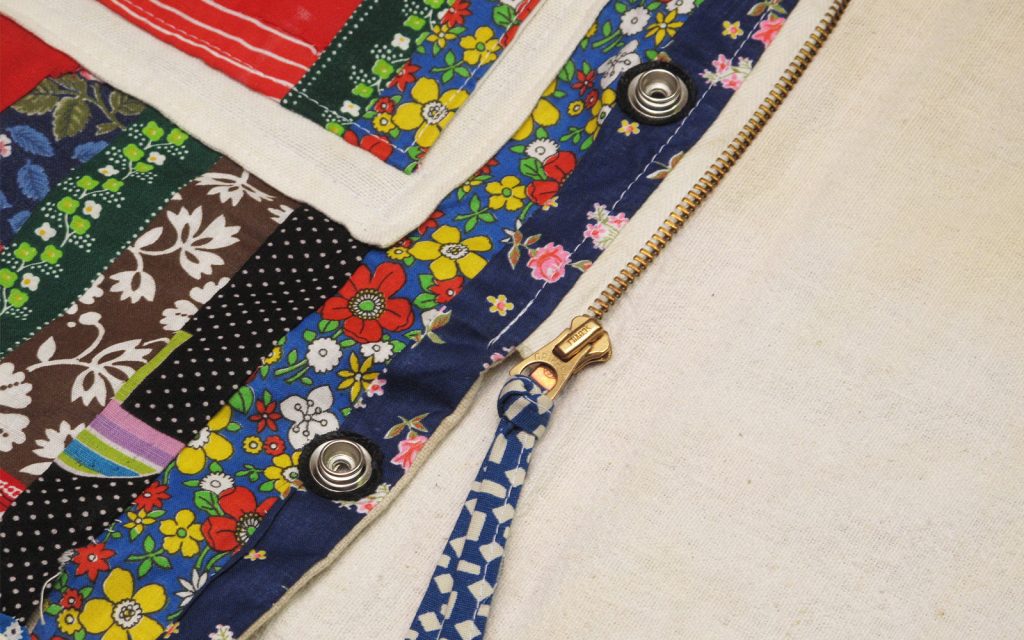CDMX’s Chava Studio Crafts Garments From an Archive of Deadstock Fabrics
Meticulously made clothing that’s luxurious but intended for everyday wear

For many years, when visiting Mexico City, Olivia Villanti would visit Gilly e Hijos—the 30-year-old shirting and fabric studio owned and run by her husband’s family—to trawl through the immense archive of beautiful deadstock fabrics her husband’s uncle, Bruno Gilly Armand, collected over three decades. The treasure trove in the studio, located just steps from CDMX‘s sprawling Bosque de Chapultepec, provided Villanti with an abundance of inspiration—and soon after moving to Mexico in 2019, she partnered with the team at Gilly e Hijos to create Chava Studio.

“It was such a special place where you could come and see these beautiful fabrics,” Villanti says, who previously worked in NYC’s fashion industry both in-house and in editorial. “I’d never worked in like very high-end fashion, so I don’t think that I ever really understood what makes a fabric really incredible until I started spending time in the studio,” she continues. “Guillaume’s uncle who owns the studio now, he’s an archivist—he doesn’t throw things away. He has beautiful deadstock fabrics. We have this specific viscose or cotton or some linens. And he also has buttons—all these things that are just really beautiful. Linings and wools—there’s just such a surplus of materials.”

Villanti and three remarkably talented seamstresses—as Chava Studio—make apparel from these fabrics, carefully selecting which will suit certain designs and meticulously crafting from the studio’s extra yardage. The styles blend avant-garde details with classic elements for pieces that feel both luxurious and functional. “It’s romantic with a touch of grit,” she tells us. “The designs are classic—whatever that actually means—but they’re also meant to be worn whenever. I know that idea gets overused, but I think that’s because it’s so important to us now.”

Villanti draws inspiration for each design from the high-quality fabrics and hardware at the studio, as well as details on her own favorite garments. “I really do love just like very clean lines and clean silhouettes,” she says. “But then you make those things with really beautiful fabrics—and by three seamstresses who are incredibly talented.”
Villanti relies on the studio seamstresses for more than their sewing skills, but also their guidance when developing designs. She wanted to make a shirt with removable cuffs, based on a piece she bought at a flea market—and together they created something even beyond her initial idea. “I had a shirt that had these removable cuffs and it was just a detail that I always thought was like so special. It’s something that you don’t find. I was like, ‘Can we take this further? Can we make removable collars?'” It’s through this process that Villanti has gained even more appreciation for the craft. “I’ve only really started to understand how talented they are,” she says. “Understanding how meticulous they are.”

From classic garments like tuxedo shirts to roomy jumpsuits, the shapes and functions vary—and everything is customizable. “I feel like there’s this duality to what we’ve designed,” Villanti says. “There are very structured silhouettes that incorporate a lot of very formal shirting elements like French cuffs and wingtip collars, but then we have these voluminous, more simple patterns.”

Some garments are available in small, medium and large, while others abide by US women’s sizes (zero through 10). That said, since each garment is made to order, Villanti is pleased to receive inquiries about custom orders—it just means some extra correspondence. “What I usually do in an instance where somebody wants something different than our usual measurements, I will often ask them for the measurements of a shirt that they really like—the way it fits them,” she says. “We have had to figure out how to modify the design to ensure that the particular silhouette is what they’re looking for.”

Regardless of the design, Chava Studio pieces are made in very small runs—just 10 garments per week. This is to ensure a reasonable workload for their seamstresses (who are paid over the standard salary) and also because Villanti says the aim of the studio has never been to scale. “I don’t have aspirations of making this big,” she tells us. “I don’t have to worry about investors or people asking to like move units. You know, if we don’t sell much, it’s OK; we don’t have inventory!”

Aside from the sewing, Villanti does everything herself, from design to shipping to writing newsletters. “I love doing everything. I think it is a very high-touch project,” she says. “And I feel like that’s what was missing from fashion—and is still missing from fashion. It feels good—albeit in a really small way—to be working in an industry that I’ve always been passionate about, but in a way that’s far less damaging and more creative.”












